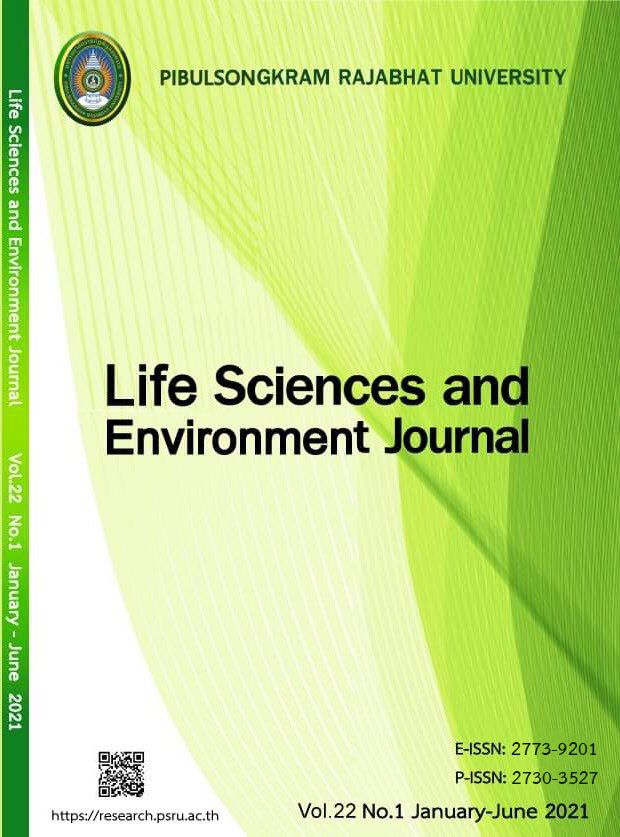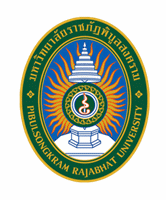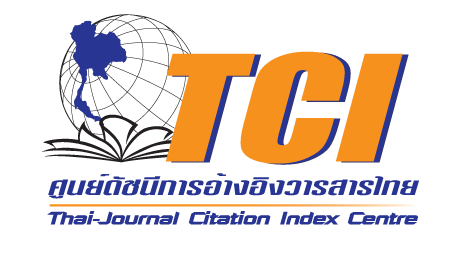การปรับปรุงประสิทธิภาพการดูดซับของเขม่าดำ ที่ได้จากการเผาขยะพลาสติก
คำสำคัญ:
เขม่าดำ, ค่าเลขการดูดซับไอโอดีน, การกระตุ้นบทคัดย่อ
งานวิจัยนี้นำเขม่าดำที่ได้จากการเผาขยะพลาสติกของเทศบาลมาปรับปรุงประสิทธิภาพการดูดซับเพื่อเพิ่มพื้นที่ผิวให้สูงขึ้น โดยการกระตุ้นทางกายภาพและทางเคมี โดยทำการกระตุ้นเขม่าดำที่อุณหภูมิและระยะเวลาต่าง ๆ ตามด้วยศึกษาชนิดและปริมาณของสารเคมีที่ใช้ในการกระตุ้นเขม่าดำ เช่น กรดซัลฟูริก กรดฟอสฟอริก โซเดียมไฮดรอกไซด์ และซิงค์คลอไรด์ เพื่อหาค่าเลขการดูดซับไอโอดีนโดยการไทเทรตกับไอโอดีนซึ่งบอกถึงประสิทธิภาพการดูดซับของเขม่าดำได้ นอกจากนี้ได้ทำการวิเคราะห์ลักษณะทางกายภาพและทางเคมีของเขม่าดำด้วยเทคนิคบลูเนอร์เอลเม็ท เทลเลอร์ เทคนิคจุลทรรศน์อิเล็กตรอนแบบส่องกราด/สเปกโตรสโคปีแบบกระจายพลังงาน และเทคนิคฟูเรียร์ทรานฟอร์มอินฟราเรดสเปกโทรเมทรี จากการทดลองพบว่าสภาวะการกระตุ้นที่ให้ค่าเลขการดูดซับไอโอดีนของเขม่าดำที่เหมาะสมคือ อุณหภูมิ 400 องศาเซลเซียส เป็นเวลา 15 นาที ด้วยโซเดียมไฮดรอกไซด์เข้มข้นร้อยละ 20 โดยน้ำหนัก เปรียบเทียบกับเขม่าดำก่อนการกระตุ้นมีค่าเลขการดูดซับไอโอดีนเพิ่มขึ้นจาก 110.24 เป็น 200.41 มิลลิกรัมต่อกรัม และพื้นที่ผิวจำเพาะของเขม่าดำสูงขึ้นจาก 5.45 เป็น 12.63 ตารางเมตรต่อกรัม ตามลำดับ ซึ่งมีพื้นที่ผิวจำเพาะเทียบเท่ากับเขม่าดำจากทางการค้า (11 ตารางเมตรต่อกรัม)
References
Accorsi JV. The Impact of Carbon Black Morphology and Dispersion on the Weather ability of Polyethylene. The international Wire and Cable Symposium: Atlantic City; 1999.
American Society for Testing and Materials. ASTMD1510-06a Standard Test Method for Carbon Black-Iodine Adsorption Number. ASTM International.
Bansode RR, Lossoa JN, Marshall WE. et al. Adsorption of volatile organic compounds by pecan shell and almond shell-based granular activated carbons. Bioresource Technology 2003;90:175-184.
Budinova T, Petrov N, Parra J. et al. Use of an activated carbon from antibiotic waste for the removal of Hg (II) aqueous solution. Journal of Environmental Management 2008;88(1):72-165.
Cheung WH, Lau SSY, Leung SY. et al. Characteristics of chemical modified activated carbons from bamboo scaffolding. Chinese Journal of Chemical 2012;(20)3:515-523.
Ismadji S, Sudaryanto Y, Hartono SB. et al. Activated carbon from char obtained from vacuum pyrolysis of teak sawdust: Pore structure development and characterization. Bioresource Technology 2005;96: 1364-1369.
Kladcharoen P. Production and Testing of Activated Carbon Obtained from Thysostachys Siamensis Pyrolysis. Master of Faculty of Science (industrial Chemistry), Chiangmai University; 2011.
Menendez-Diaz JA, Martin-Gullon I. Types of carbon adsorbent and their production. Interface Science and Technology 2006;7:1-47.
Mopoung S, Inkum S, Anuwetch L. Effect of temperature on micropore of activated carbon from sticky rice straw by H3PO4 activation. Carbon–Science and Technology 2015;7(3):24–29.
Rizhikovs J, Zandersons J. Spince S. et al. Preparation of granular activated carbon from hydrothermally treated and pelletized deciduous wood. Journal of Analytical and Applied Pyrolysis 2012;93:68-76.
Sae-oui P. Rubber Chemistry. 2nd Edition, National Metal and Materials Technology Center; 1994: 70-98.
Thammee N, Kekngoun M, Mopoung S. The surface properties of activated carbon prepared from the trunk, root and peel of cassava. NU science Journal 2012;9:80-97.
Downloads
เผยแพร่แล้ว
How to Cite
ฉบับ
บท
License
Each article is copyrighted © by its author(s) and is published under license from the author(s).









